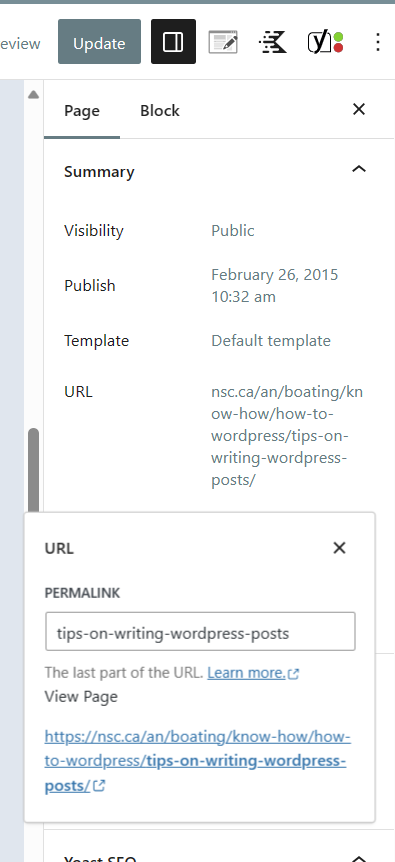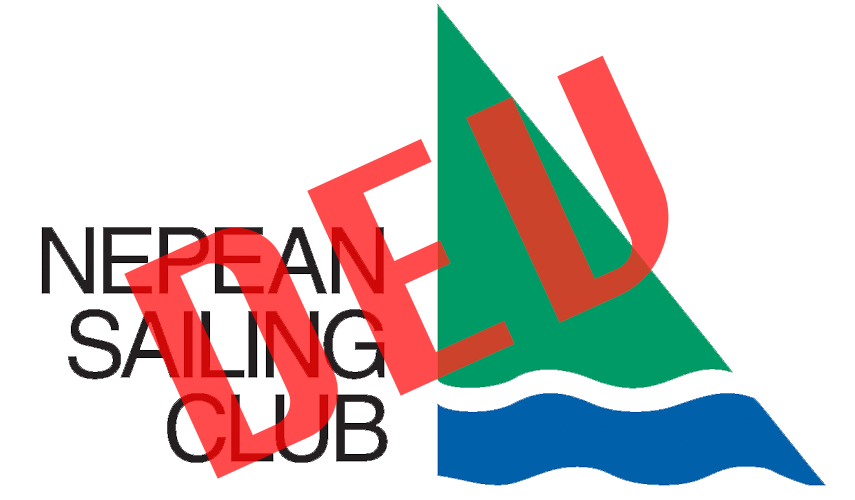Pointers On Effective Posting
This is a writing aid for NSC website contributors and editors, especially those new to writing posts.
Title
- By default, WordPress no longer puts the title in title case but our standard is to capitalize each main word (not ‘to’, ‘and’, ‘for’ etc.)
- The title will by default be in the format of “Heading 1” or “H1”. Subheadings are H2, H3 etc. Google and other search engines focus on H1 titles as well as H2 and H3. (Never change the default settings of the headings nor of those in the right hand tool bar.)
- But come back to the title at the end of designing your post. Do not necessarily use the title that somebody submitted because you’ll need to choose a key phrase from the post that works best for search engine optimization (SEO). (The SEO software on the website will guide you.)
An example for now might be to not use “Bring on the Bay Swim this weekend: Notice of short Harbour Closing”, but rather shorten it to “Harbour Closing for Bring on the Bay Swim” and put your key phrase “Harbour closing” at the beginning so that people find that in internet searches. (And keep the title under 60 characters to optimize SEO.)
Dates and times
- If you include a date
- Spell the month out in full unless out of space.
- Leave out the year.
- Don’t use ordinals like 1st, 2nd, 23rd etc. Just August 1, 2, 23.
E.g. Crane Familiarization Session, August 23, 6:00 P.M..
- If you include a time
- append it at the end of the title, with a comma.
- Write times using the 12-hour clock like 6 p.m. NOT 1800hours. It’s clearer for most.
E.g. Crane Familiarization Session, August 23, 6:00 P.M..
The main thrust first
- Put the main thrust at the top of the post. This is what will be displayed before the post is opened. Try to limit it to 3 short, attention-getting lines that will want to make the reader click on “Read more.” Do not use bold, UPPERCASE, or colour. These are reserved for emergency messages, safety announcements, and any topic that addresses potential danger to life and property.
- In addition, it’s a good idea to write a “Meta description” in the box at the bottom of the draft page. That’s the short description that search engines and social networks display below your post title. If you don’t write a custom meta description, then search engines simply grab the first few sentences and cut it off which doesn’t look very good.

So just summarize the post in your own words as a custom meta description. Keep it under 160 characters long. (There is a bar below it that will display green when it’s the right length.) - Note that there is no longer a need to insert a “More” divider since the display length is automatically set for every post.
Choose a good permalink
- What’s a permalink? It is the text that appears after “https://nsc.wmtest.ca/an/blog/_____” as part of the URL for the post. By default, WordPress makes the permalink a concatenation of the words in the title, separated by hyphens.
For example, the default permalink for this post would be “https://nsc.wmtest.ca/an/blog/tips-on-writing-wordpress-posts-for-nsc.ca”, but that’s quite a mouthful! So it has been manually shortened to “https://nsc.wmtest.ca/an/blog/writing-wordpress-posts/”. Edit the permalink in the tool bar to the right by simply clicking on it. Once you’re done, just close the box.
- Consider adding the year to the permalink, as in “https://nsc.wmtest.ca/an/blog/bring-on-the-bay-report-2023/”, since a similar permalink may be used for the same event in other years. Tip: in a new tab, search for the event title to try to find a past post’s permalink to copy.
- However, other than reports, some posts are reused from year to year to save backup space e.g. for event advertisements. In such a case, don’t use the date in the permalink for a post, or for events that might be re-scheduled.
Use appropriate text for hyperlinks
- Search engine optimization requires that key information is included in the hyperlink. This is what Google (and most search engines) pay great attention to! Don’t say “click here” – rather link the whole sentence or phrase like this: see this Ultimate WordPress SEO Guide for Beginners regarding hyperlinks.
Further Resources
Here’s a great intro video on how to create a post.
Ever wondered if professional bloggers have some sort of checklist that they use before publishing their blog posts? Yup, most of them do. Check out this checklist before you press “Publish”.
Thank You!
Thank you for being a contributor to NSC life, activities and communications!
Please send feedback and comments to webmaster@nsc.ca.
Update log:
2015:
06 Dec: HM: Last update before adding this update log.
2018:
19 Apr: HM: Added update log. Corrected email address for Webmaster.
21 Apr: HM: Changed “web site” to “website”, to adopt newly agreed upon NSC standard.
2023-08-19 SK updated text to fit with new WordPress Kadence capabilities.
2015:
06 Dec: HM: Last update before adding this update log.
2018:
19 Apr: HM: Added update log. Corrected email address for Webmaster.
21 Apr: HM: Changed “web site” to “website”, to adopt newly agreed upon NSC standard.
2023-08-19 SK updated text to fit with new WordPress Kadence capabilities.
